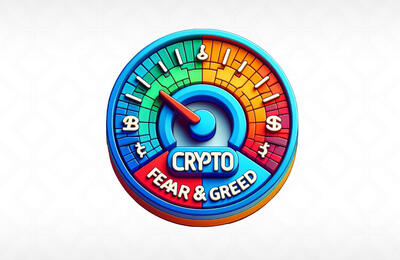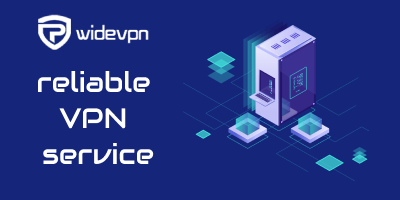
Crypto trading is no easy feat. With so many different strategies to choose from, it can be hard to know which one is right for you and your trading needs. With the rising popularity of dozens of crypto coins, more and more beginners come to the world of blockchain to try their luck in trading.
Most of them are looking for an easy start that will bring them plenty of money, and only some of them understand that one needs knowledge and skills to win this battle. There are plenty of crypto trading strategies available, such as day trading, investing, scalping, etc.
But what if there is more for you? Let's explore strategies that you may have missed during your research. Who knows — maybe one of them is the best one for your trading style.

#1 — Dollar-Cost Averaging
Dollar-cost averaging (DCA) is a popular strategy that requires buying a fixed dollar amount of crypto regularly. This helps to reduce the impact of market volatility on your investments. With dollar-cost averaging, you buy crypto at whatever price it is and spread out the purchase over a longer period of time. By doing this, you can buy more of the crypto when it is cheap and less of it when it is expensive.
DCA works best in a bear market when the prices are going down. It is less effective when the markets are trending up since you miss out on the profits. So, while trading with crypto signals Telegram in a bear market, you can try your luck with DCA strategy.
Pros of Dollar-Cost Averaging Strategy
— Spreads out your purchase over a longer period of time, thus reducing the risk of entering at the wrong time.
— Avoids the emotional swings of timing the market.
— Can take advantage of dips in the price to buy more.
— Helps average out your cost per coin, which reduces your losses if prices fall.
Cons of Dollar-Cost Averaging Strategy
— You may miss out on potential profits if the markets are trending up.
— Can be difficult to stick to the same strategy over a long period of time.
#2 — Momentum Trading
Momentum trading is a strategy based on the idea that an asset’s recent performance can be indicative of its future direction. Momentum traders look for assets that have been performing well in the recent past and then buy them in hopes of riding their momentum.
The idea behind this strategy is that markets tend to overreact to news and events, and this can lead to short-term price movements. Momentum traders look for these movements and try to get in and out of trades quickly.
Pros of Momentum Trading Strategy
— Can generate quick profits if you are able to spot the right trends.
— Can take advantage of short-term price movements.
— Allows you to get in and out of trades quickly, reducing the risk of losses.
Cons of Momentum Trading Strategy
— It can be difficult to spot the right trends and predict future price movements.
— Can be risky if the trend reverses or if you enter or exit a trade too late.
#3 — Trading Arbitrage
Arbitrage trading is a strategy where traders take advantage of price discrepancies across different exchanges. This involves buying an asset on one exchange and then selling it on another exchange for a higher price. This is a popular strategy among experienced traders as it can produce quick profits with low risk.
Pros of Arbitrage Trading Strategy
— Can produce quick profits with low risk.
— Allows you to take advantage of price discrepancies across different exchanges.
Cons of Arbitrage Trading Strategy
— It can be difficult to identify price discrepancies in time for you to take advantage of them.
— Can be expensive due to the fees charged by exchanges.
— It can be difficult to execute multiple trades at the same time if you are trading on different exchanges.
#4 — Smart Trading
Smart trading is a relatively new strategy that combines market analysis, machine learning, and AI technology. Smart traders use sophisticated algorithms to analyze the markets and identify potential trading opportunities. This allows them to make more informed decisions and potentially achieve higher returns.
Pros of Smart Trading Strategy
— Allows you to make more informed decisions.
— Can potentially achieve higher returns.
— Uses sophisticated algorithms to identify potential trading opportunities.
Cons of Smart Trading Strategy
— It can be expensive to buy the software and data required for smart trading.
— Can be difficult to keep up with the ever-changing market conditions.
#5 — Range Crypto Trading
Range crypto trading is a strategy that involves buying and selling cryptocurrencies within a defined price range. This allows traders to take advantage of both upside and downside price movements. Range traders attempt to buy at the bottom of a range and sell when the cryptocurrency reaches the top of the range.
Pros of Range Crypto Trading Strategy
— Allows you to take advantage of both upside and downside price movements.
— Can help reduce risk by limiting your exposure to volatile price swings.
Cons of Range Crypto Trading Strategy
— Can be difficult to predict where the range will end.
— Can be tricky to execute if you don’t have a good system in place.
#6 — Moving Average Crossovers
Moving average crossovers is a strategy that involves looking for price crossover points between two different moving averages. Moving averages are lagging indicators, and they can be used to identify trends in the market. When a shorter-term moving average crosses above or below a longer-term moving average, it can signal a potential trend reversal.
Pros of Moving Average Crossover Strategy
— Can be used to identify potential trend reversals.
— Helps traders identify potential entry and exit points.
Cons of Moving Average Crossover Strategy
— Can be risky if the trend does not reverse as expected.
— Moving averages can give false signals in choppy markets.
#7 — Automated Crypto Trading
Automated crypto trading is a strategy that uses automated computer programs to buy and sell cryptocurrencies. Automated trading programs are designed to analyze the markets and identify trading signals according to certain predetermined criteria. These programs can be used to generate trading signals, place orders, and manage positions.
Pros of Automated Crypto Trading Strategy
- Can help save time as the trades are executed automatically.
— Can be used to generate trading signals and manage positions.
Cons of Automated Crypto Trading Strategy
— Can be difficult to set up and maintain the system.
Tips on Choosing the Best Crypto Trading Strategy
No matter which crypto trading strategy you choose to pursue, it’s important to remember that the most successful traders are those who have a well-defined plan and stick to it.
Here is a short list of tips you may use to choose the crypto trading strategy that works best for you:
1. Understand the risks involved: Crypto trading involves significant risk, so it’s important to understand the market and have a plan in place before you start trading.
2. Do your research: Be sure to research any potential trades thoroughly before executing them.
3. Have a plan: Having a well-defined plan and sticking to it can help you make more consistent profits.
4. Monitor the market: Keep an eye on the markets and be prepared to adjust your strategy as needed.
5. Invest wisely: Don’t put all of your eggs in one basket – diversify your investments across a range of different coins and strategies.
Conclusions
Crypto trading can be a lucrative endeavor, but it’s important to understand the risks involved. The best way to minimize these risks is by selecting an appropriate trading strategy and doing your research before executing any trades.
There are many different strategies available, from range crypto trading to automated crypto trading, so choose the one that best fits your goals and risk tolerance. With the right strategy and a little bit of patience, you can be well on your way to becoming a successful crypto trader.













